Projects of main battle tanks in NATO countries
German army wants to modernize its fleet of 328 tanks Leopard 2 (pictured option 2A6) to standard 2A7
Without developing new machines, the NATO countries, seeking to maintain their capabilities in the field of MBT, have no alternative but to restore and update their existing machines. Consider the currently implemented program.
The main battle tank (MBT) is one of the most expensive and lethal ground combat systems in service with most armies. Most of the current generation of NATO’s MBT, designed in the 70 and 80 of the last century, is projected to remain in service for the next 20 or 30 years and operators in France, Germany, Great Britain and the United States are taking on modernization projects to maintain combat effectiveness their tanks.
ABRAMS is progressing
Since the M1 Abrams tank, created by General Dynamics Land Systems (GDLS), entered service with 35 years ago and replaced the M60 tank with the 105-mm gun, it has taken full advantage of the continuous improvement process funded by the US army. For the army of this country, more than 8800 M1 tanks were manufactured in various versions (the most famous M1, M1A1 and M1A2), while the 403 machines M1A1 were supplied to the Marine Corps. M1 tank was exported to Australia (59 tanks M1A1 AIM from the presence of the American army), Egypt (over 1000 M1A1 co-production in the country), Iraq (140 M1A1M from the presence of the American army), Kuwait (218 new M1A2) and Saudi Arabia (330 new M1A2).
The M3273 1, made in 1979-1985, was armed with a Royal Ordnance 105-mm L7 cannon. Then they began to produce the M1A1 variant, armed with an 120-mm smooth-bore M256 gun, based on the Rheinmetall L44. While the M1A1 was practically a new tank, most of the M1A2, which began to enter service with the 1993 of the year, represent upgrades to previous M1 or M1A1 models.
In order to cope with the challenges of asymmetric warfare in Iraq, in the form of, for example, improvised explosive devices (IEDs), RPG attacks and snipers in urban areas, the organization responsible for the Abrams project launched a modernization kit program in 2005, which subsequently received TUSK designation (Tank Urban Survival Kit - a set of additional equipment and reservations for the Abrams tank, enhancing its combat capabilities in the city). In August of 2006, she issued a contract to GDLS for 45 million dollars to manufacture and install 505 of such kits.
The TUSK kit includes: armored screens for the loader and the commander, providing protection against small fire weapons and shell fragments or IEDs when working with an open hatch; Abrams Tile I and II dynamic protection units, providing higher levels of ballistic protection; stabilized remote commander combat module providing protection against snipers or IEDs; machine gun on the barrel for precision firing Counter-Sniper Anti-Materiel Mount; and a thermal loader sight with a helmet-mounted display, which provides a picture when firing an 7,62-mm M240 machine gun.
Tank Abrams in picking TUSK
In addition, the kit includes additional elements: a telephone for communication with infantry (TIP) and other dismounted units; thermal sight for 12,7-mm machine gun; power of vision (review) driver; power switchboard; additional booking bottoms; energy absorbing driver's seat; rearview camera driver; a canopy to create shade and reduce the temperature inside the tank during operations in hot areas; and a crew conditioning kit.
Modular approach
The TUSK modular suite allows users from different elements to build a system that matches current threats. When the Marine Corps deployed a company of M1A1 tanks in Afghanistan at the end of 2010, he selected three items from the TUSK kit: bottom reservation; thermal imager for the commander's 12,7-mm machine gun and armored shield for the loader. The hull before that, as part of its program to increase the fire power of the tank, the M1 installed a second-generation front-view thermal imaging system and a TIP telephone.
After the withdrawal of US troops from Iraq, TUSK kits were rebuilt and redeployed to prepare for future deployments.
The US Army plans to leave M1 Abrams tanks in operation of its armored brigades until about the 2050 year. “The army’s strategy to modernize the Abrams fleet revolves around issues of progressive modernization of the platform through a combination of technological innovations and product improvements based on evolving threats and available technologies,” said Rob Brown, an assistant to the head of Abrams tank, in an interview in January 2014. in the Doctrine and Combat Training Command TRADOC.
The current Army Standard for Upgrade is the M1A2 SEP (System Enhancement Package - System Upgrade Kit) version of 2, which is based on the previous version of M1A2 SEP v1, deployed in the middle of 2009. GDLS describes the M1A2 SEP v2 as “the most technologically advanced tank in the world.” According to military sources, M1A2 SEP is notable for “improved microprocessors, color displays, a large amount of memory, an improved human-machine interface, and a new operating system that runs software for a common combat space.”
“Both the main GPS gunner and the independent thermal imager of the CITV commander from the M1A2 SEP kit are based on the new thermal capabilities of the second-generation FLIR technology. The M1A2 SEP kit includes a reservation for the front end and sides, which increases the survivability of the crew. The M1A2 SEP standard tank is also fitted with a fully rebuilt Total Integrated Revitalization (TIGER) engine and an upgraded transmission, which increases the reliability and service life of the power unit and chassis systems. "
The kit also includes color displays and thermal sights, a remote-controlled commander CROWS II combat module (Commander's Remote Operated Weapon Station II), a Thermal Management System (TMS) thermal control system and a TIP telephone.
The original SEP v2 multi-year contract, issued in February 2008, provided funding for the upgrading of 435 M1A1 tanks to a new configuration; As a result, by the end of 2013, approximately 1600 tanks from 2400 tanks M1 armies were refined to this standard. In January, 2014, the company GDLS received an order worth 72,7 million dollars for the serial upgrading of another 12 M1A1 tank to the standard M1A2 SEP v2, and in February 2015, the company received a contract to upgrade six more pieces. Works under these contracts will continue until January 2017.
In the fiscal year 2016 fiscal year, the army stated that “M1 is on the edge of its volume, mass and cooling capacity or even exceeds it” and explained that it is implementing a number of proposals to make design changes to support current integrated systems and simplify embedding. technologies developed under other priority programs. The Army has requested 77,6 million dollars for research, design, testing and evaluation work on these proposals and the integration of the improved thermal imaging system IFLIR and 367,9 million dollars for financing the start of production of the components provided by the Abrams design changes, and their integration into 2017 fiscal year.
According to the army, “the proposal for making changes under number 1A is aimed at interoperability in the new network and system deficit of electrical power in order to integrate the approved requirements, improve survivability and update the electronics in order to eliminate obsolescence and significantly increase combat stability.” In particular, the upgrade includes a modified Handheld Manpack Small (HMS) communication system, a new 1000 Amp generator, a power distribution system (a new slip ring, a battery monitoring system, and an auxiliary power unit), a radio electronic control kit with radio-controlled VCA (CREW / Duke 3) , the next generation of armor, a communication channel with ammunition for firing intelligent shells (currently under development) and the replacement of six quick-change blocks for quick-change modules.
MBT M1A2 System Enhancement Package v2
Assessment process
GDLS delivered nine M1A2 ECP 1A prototypes to test sites in Aberdeen and Yuma. The tests will be carried out in two stages: control tests of the product in 2015-2018 years and acceptance tests of the product scheduled for the 2018-2020 years.
The proposal for amending Abrams ECP 1B, previously known as ECP 2, consists mainly in improving mortality and, in accordance with existing plans, mass production of its components will begin in the 2020 year. The main emphasis is placed on the integration of IFLIR and the communication channel with ammunition, which will allow the tank to fire with new XM1147 HEMP-T ammunition (High Explosive Multi-Purpose with Tracer - high-explosive fragmentation universal with tracer) developed by the weapons research center.
In July, the US Army issued contracts to General Dynamics Ordnance and Tactical Systems and Orbital ATK for the development of this munition and, according to the schedule, the production of the projectile batch of shells should begin in the 2015 year.
As part of the ECP 1B proposal, the army is also seeking to further improve its surveillance and targeting sensors, including “color cameras and laser systems. Other potential improvements include an improved life support system, a laser warning system receiver and a smoke screen installation system. Research will be conducted on alternative solutions to evaluate other potential upgrades. ”
In October 2013, at the AUSA 2013 exhibition, GDLS identified the potential for further upgrades. She presented the Abrams tank with a new power unit consisting of a diesel engine MTU 12V 883 with a power 1500 hp, a new cooling system and an Allison automatic transmission, which is proposed as a replacement for the gas turbine engine from Honeywell. According to GDLS, this upgrade will allow M1A1 / M1A2 tanks to significantly improve performance and reduce operating costs by 14%.
Tireless Leopard
The Leopard 2 tank was jointly developed by Krauss-Maffei Wegmann and Rheinmetall in the 70s of the last century as a replacement for the Leopard 1 tank of the German army armed with an 105-mm cannon; its production was divided between these two companies. From 1979, approximately 2125 tanks were manufactured for the local market. As well as the Leopard 1, the second option was successful in the export market; 17 countries bought new or used Leopard 2 tanks. At the beginning of 2013, Qatar became the last buyer of new cars when it ordered the 62 tank Leopard 2A7 + with deliveries scheduled for the end of 2015 of the year. This contract increased the number of Leopard production tanks to almost 3550 machines.
In order to meet the needs of the German army and foreign customers, the Leopard 2 tank was continuously upgraded and improved. Early models (up to 2A4) are distinguished by vertical armoring of the tower, while subsequent versions (up to the last 2A7 ++) are distinguished by inclined armor. Starting with the Leopard 2A6, the 120-mm smoothbore Rheinmetall L44 gun was replaced with the more powerful 120-mm smoothbore L55 gun.
In the middle of 2010, KMW showed the tank Leopard 2A7 +, a further development of the configuration Leopard 2 PSO (Peace Support Operations - peacekeeping operations), which in turn was shown in the middle of 2006. This configuration has incorporated all the wishes and requests of the Canadian and Danish armies, whose contingents deployed their Leopard 2 tanks in Afghanistan.
Canada received 20 2A6M tanks from the presence of the German army, upgraded by KMW to 2A6M CAN configuration. Hinged lattice screens were installed along the sides and in the stern of the hull and turret in order to provide additional protection against RPGs, as well as Canadian radio stations and radio electronic suppression equipment. Later, the air conditioning system and a camouflage system for mobile objects Mobile Camouflage System from Saab Barracuda were installed on the theater.
The Leopard 2A7 + version provides a wide range of possible upgrades, although KMW expects that Germany and other German tank operators will not select all options for financial reasons. The new model has a KMW FLW 200 rooftop installed on the roof and an enhanced booking kit that provides all-round protection as well as protection from weapon systems that attack from above. Day and thermal cameras allow all crew members to control the situation around the vehicle. The commander has a new, mounted on the roof stabilized panoramic sight with daytime channels and a laser rangefinder, while the driver has a new day / night camera and a seat suspended from the ceiling, increasing the likelihood of survival.
The 2A7 version + standard MTU power unit with 1500 horsepower. he was left, at the same time, he received new flight reducers, new tracks from Diehl, an improved torsion bar suspension and braking system, which was the result of an increase in the weight of the machine. For operation at high temperatures, an air-conditioning system was installed, as well as a telephone to communicate with the infantry. If necessary, for example, in case of unavailability of engineering units, a front dozer blade can be installed to clear obstacles and quickly open a firing position.
For operations in Afghanistan, Canada urgently needed tanks Leopard 2. Therefore, Germany "occupied" 20 tanks 2A6M (the best that was in the warehouses of Germany) Canada, provided that they will be returned in the "as delivered" state. However, since the tanks, upgraded to the configuration of the 2A6M CAN, were seriously “battered” during the operation, there was no point in returning the original vehicles.
Instead, Canada bought 20 Dutch tanks Leopard 2A6NL (as well as 80 2A4NL tanks stored) and paid KMW to upgrade them to 2A6M for further delivery to Germany. However, Germany took advantage of the fact that these tanks are being upgraded at the KMW plant and ordered their revision to the standard 2A7. In December, 2014, Germany received the first 20 tanks, Leopard 2A7, and now the German army and KMW are hoping for government funding to upgrade the entire tank fleet to the 2A7 standard.
The German government responded to the events in Ukraine and increased the number of Leopard 2 tanks remaining in service from 225 to 338 and the army is now awaiting funding for the modernization of these tanks to the 2A7 configuration.
Tanks for export
As a foreign market, Rheinmetall has developed its own Leopard 2 retrofit kit. The Revolution MBT, shown at Eurosatory 2010, consists of 12 modules that allow customers to select items that fit their needs and budgets. Rheinmetall describes this upgrade as “revolutionary” because it offers a new “protection kit, along with an increased set of intelligence and surveillance systems with a relatively modest increase in mass.”
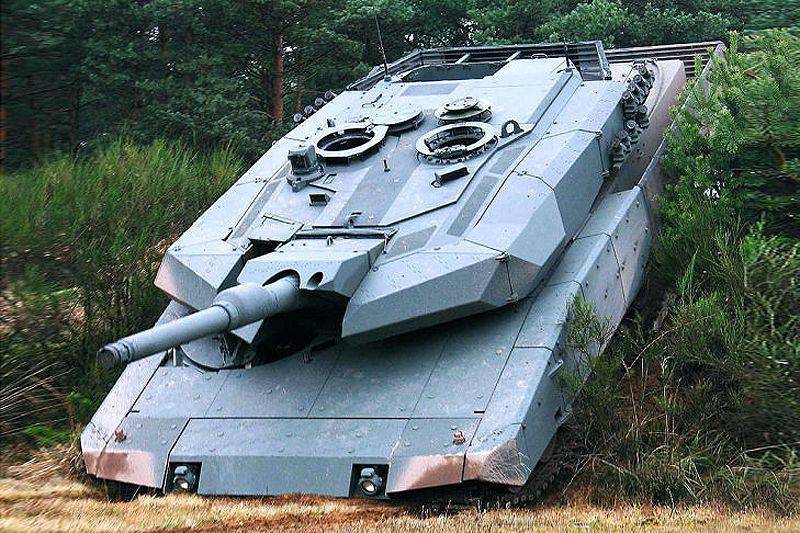
MBT Leopard Revolution
The passive booking system developed by IBD Deisenroth provides an increase in the level of perimeter protection and includes modules for protecting the hull and turret from IEDs, the bottom from mines and the roof from fragments of shells.
Rheinmetall offers two options for enhancing the capabilities of the tower. In accordance with the first, the main analog system is retained and modern components are added, for example, a laser range finder, a commander's periscope and a thermal imager arrow. According to the second variant, a full revision of the main system is carried out in order to obtain an integrated digital tower with a shorter response time and a higher probability of hitting the first shot.
The British Army plans to launch a life extension program, the implementation of which will allow the Challenger 2 tank to remain in service until 2035.
Rheinmetall's stabilized optoelectronic sensor system, SEOSS (Stabilized Electro-Optical Sensor System) from the company, provides the commander with improved observation capabilities at night, has an increased range and high elevation angles (up to 70 °), while the situational awareness system provides circular all-round An overview of the immediate environment with automatic warning and tracking functions. New information management system provides tracking of their forces and visualization of the enemy forces.
Other improvements include: a brake that allows the commander to stop the tank in critical situations; roof mounted, stabilized; improved air conditioning system, combined with the new concept of isolating the fighting compartment, improved ventilation and thermal protection of the store; and an external two-way communication system that allows the crew to communicate with dismounted infantry. The customer can either keep the original L44 cannon, or replace it with a L55 cannon.
Rheinmetall bought several Leopard 2 tanks from Germany and Switzerland, which they offer to resell as MBT or convert to Kodiak engineering vehicle. In December, 2012 Indonesia bought the 103 tank Leopard 2A4 from Rheinmetall, of which the 61 machine is upgraded to the configuration of Leopard 2 RI (Republic of Indonesia), which includes many of the elements of the Revolution kit.
City Warriors
Nexter from 1992 to 2008 put 406 tanks of the French army in Leclerc for the year, and also produced 1994 tanks for the United Arab Emirates from 2008 to 388 year of 46 tropical tanks, 2008 repair and recovery vehicles and two driving instruction machines. French tanks were manufactured in three series, each of which included numerous improvements; the last series is called Série XXI. In the final version of the 254 defense budget of the year, the Leclerc fleet was reduced to 2013 MBT, and later, in accordance with the 200 defense budget of the year, this number was reduced to XNUMX vehicles, which is enough to arm two armored brigades.
In the middle of 2006, Nexter showed a Leclerc Action en Zone Urbaine (AZUR) retrofit kit, specially designed for urban warfare, which includes an additional comprehensive protection system and an improved situational awareness system. New modular side screens of composite armor expanded from the front to the end of the fighting compartment, the back of the chassis protect lattice screens. The upper sheets of the engine compartment were modified to increase protection against incendiary bottles.
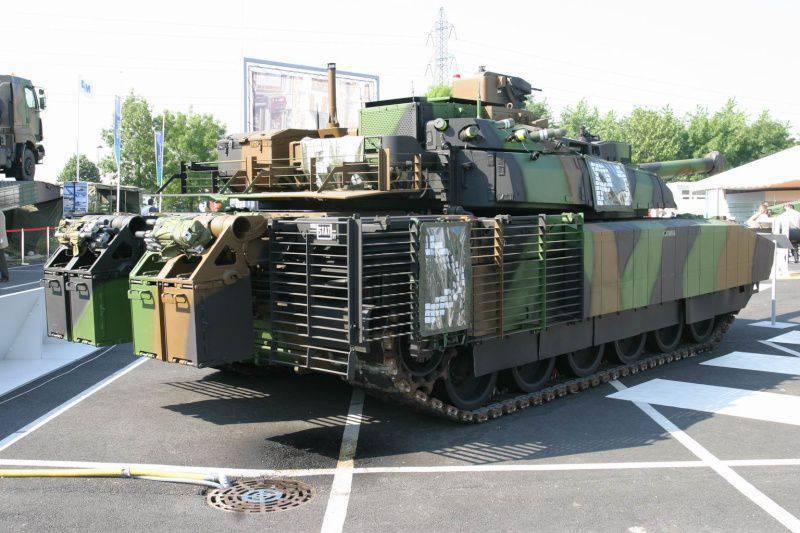
Tank Leclerc in picking AZUR
The panoramic camera installed on the roof allows the commander to conduct round-the-clock observation, and the close protection is improved by installing an 7,62-mm DBMS on the roof. GALIX grenade launchers are installed on each side of the tower, which can fire GALIX 4 smoke grenades, smoke screen grenades in the GALIX 13 infrared spectrum and grenades with limited GALIX 46 damaging effects.
Instead of standardly installed diesel fuel tanks for long-range crossings, discharged containers for additional equipment and weapons, such as ammunition for dismounted infantry, can be installed. The AZUR kit also includes a phone for contacting infantry. A complete AZUR kit can be installed on a tank in less than half a day using standard tools and equipment. In 2011-2012 for years, Nexter produced an unnamed number of AZUR kits for the UAE.
In March, 2015 of the French DGA Defense Department issued Nexter a contract worth 330 million dollars to upgrade 200 Leclerc and 18 BRAM DCL to Leclerc Renové and DCL Renova to extend the service life of the machines and then 2040 of the year. The Office describes the contract as a third project launched as part of the SCORPION French Army Armored Equipment Renovation Program (Synergie du Company Renforce par la Polyvalence et l'InfovalorisatiON — a combination of reliable contact through versatility and information value).
Upgrades include new booking kits to better match threats, such as VCAs, the installation of new tactical digital radio stations developed by Thales under the CONTACT digital communications program (Communications Business TACtiques et de TeatrE), and the integration of upgraded machines into the tactical network-centric SICS information system (System d 'Information et de Commandement SCORPION), developed by Bull and Thales.
British tank CHALLENGER
The BAE of BAE Systems, the Challenger 2, began to enter service with the British army in 1993 as a replacement for the previous Challenger 1; The supply of 386 tanks ended in the 2002 year. Another 38 machine was made for Oman. As a result of the revision of the British defense budget 2010, the Challenger 2 fleet was reduced to 227 vehicles, which is enough to equip three Type 58 armored regiments (one in each of the three motorized infantry brigades). The decommission date for the Challenger 2 was moved from 2028 to 2035 year.
The Challenger 2 tank, although with significant modifications, maintains the hull of its predecessor, it has a new turret installed, armed with an 120-mm high-pressure rifled L30A1 gun, it is the only NATO tank with a rifled 120-mm gun. This forces the UK to finance the development of its own ammunition without the hope of reimbursing the cost of exports.
For the invasion of Iraq in 2003, BAE Systems supplied retrofit kits for 137 tanks. As part of several urgent operational requirements, the company carried out further refinements in order to modernize the number of tanks sufficient to arm the compound deployed in this country during the subsequent stabilization operation. These modifications included additional armor, including bottom plates, electronic silencers for IEDs, mounted on the roof of the Selex Enforcer, equipped with an 7,62-mm machine gun, new night-vision devices for the driver and rear-view camera, a modified air filter for the power unit and a new cooling system.
Together, these improvements have increased the mass of the Challenger 2 from 62,5 tons to almost 75 tons, which in turn reduced the power density.
At the end of the 90s, the British Army planned a CSP (Capability Sustainment Program) program to extend the life of the Challenger 2, which included the Challenger Lipness Improvement Program (CLIP), which included the replacement of the L30AXNX gun Rheinmetall L1 gun caliber 55 mm. As part of a demonstration program, the 120-mm L120 smoothbore gun was installed on the Challenger 55 and tested in the 2-2005 years by the armored test office. However, budget cuts did not allow the CSP program to continue.
The new government review of strategic defense and security, which is scheduled to be published by the end of 2015, is expected to include a program to extend the life of the Challenger 2 to 2035. The new project is less ambitious compared to the CSP program, since the L30A1 gun will be left, and the emphasis will be on wear and obsolescence. It is expected that a new power unit and a new optoelectronics will be installed.
General Dynamics UK and Lockheed Martin UK are more likely to compete with BAE Systems Combat Vehicles UK for CSP. It is assumed that the invitation to bid for the evaluation phase will be published in 2016 year.
Comment
At the annual exhibition-symposium of the Association of the United States Army (AUSA 2015), held in Washington from 12 to 15 in October 2015, the American corporation General Dynamics for the first time publicly demonstrated the latest modification of the main American tank M1 Abrams - version M1A2 SEP v.3 (until now, the M1A2 SEP v.2 version was the most advanced in the US Army).
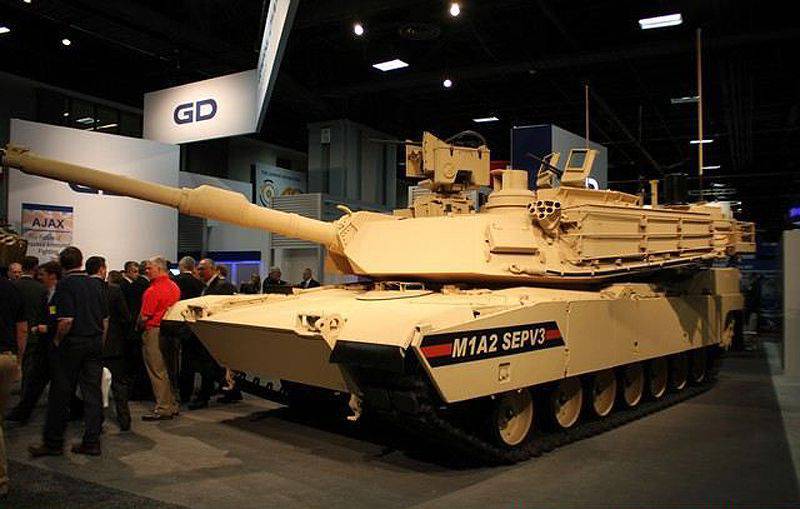
Prototype of a modernized American tank Abrams M1A2 SEP v.3 at the AUSA 2015 exhibition
The main differences between the M1A2 SEP v.3 modification and the SEP v.2 modification:
Introduction to the ammunition of the new 120-mm sub-caliber armor-piercing projectile M829EX4 (M829A4) of enhanced armor penetration.
An introduction to the ammunition of the new 120-mm Advanced Multi-Purpose (AMP) ХМ1147 high explosive multi-purpose tracer (HEMP-T) multi-purpose multipurpose shot with a programmable fuse. Thus, unification of the tank ammunition on the basis of just two shots will be achieved - the multipurpose ХМ1147 АMP and the armor-piercing sabot M829E4 AKE.
Modernization of the tank fire control system with the installation of Ammunition Data Link (ADL) equipment, which allows firing AMP shots with a programmable fuse.
Installing new thermal imaging devices IFLIR in the gunner’s sight and independent commander’s panoramic sight, with an image output to high-definition displays.
Installation of the Commander's Remote Operated Weapon Station Low Profile (CROWS-LP) mounted on the roof of the turret of a tank, commanded by a commander of a tank, with an 12,7-mm M2 machine gun. The module is equipped with a round-the-clock surveillance and aiming system, which allows it to be used as the actual second panoramic sight of the tank crew.
Modernization of tanks of the M1 family of the US Army to the level of M1A2 SEP v.3 will most likely be carried out from the 2016 of the fiscal year (replacing the ongoing modernization to the level of M1A2 SEP v.2), to which the budget of the specified fiscal year should be allocated 367,9 million. .
Materials used:
www.shephardmedia.com
www.gdls.com
www.kmweg.com
www.rheinmetall.com
www.nexter-group.fr
www.bmpd.livejournal.com
www.baesystems.com
www.ausameetings.org
www.wikipedia.org
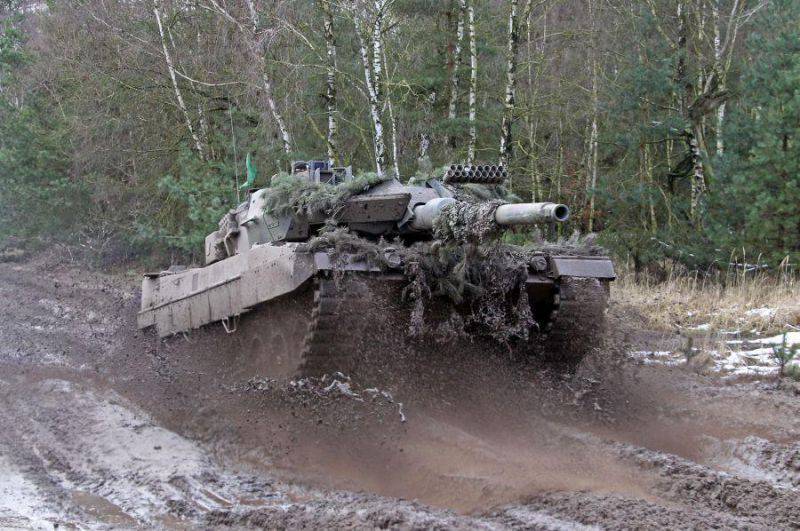
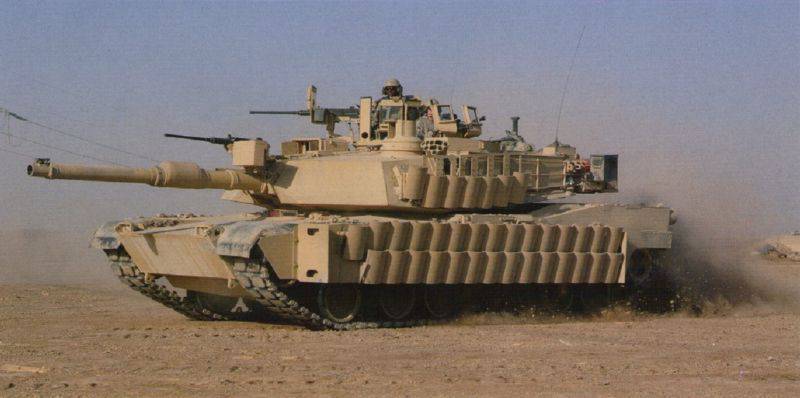
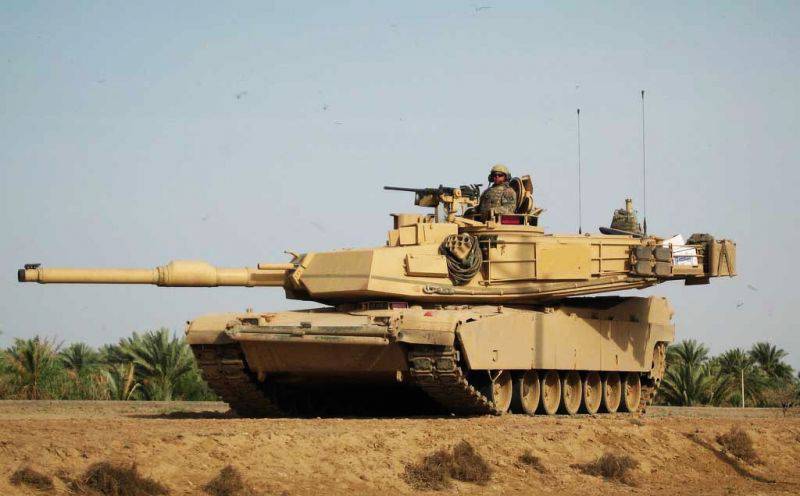
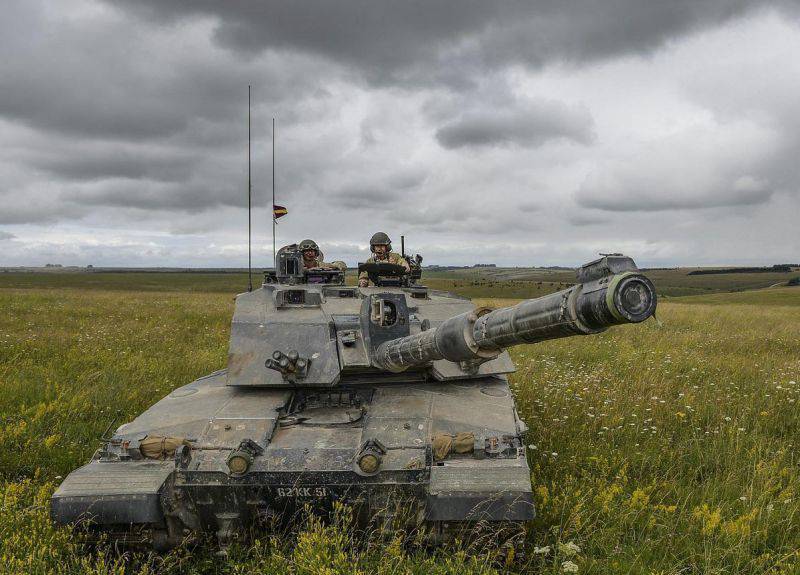
Information